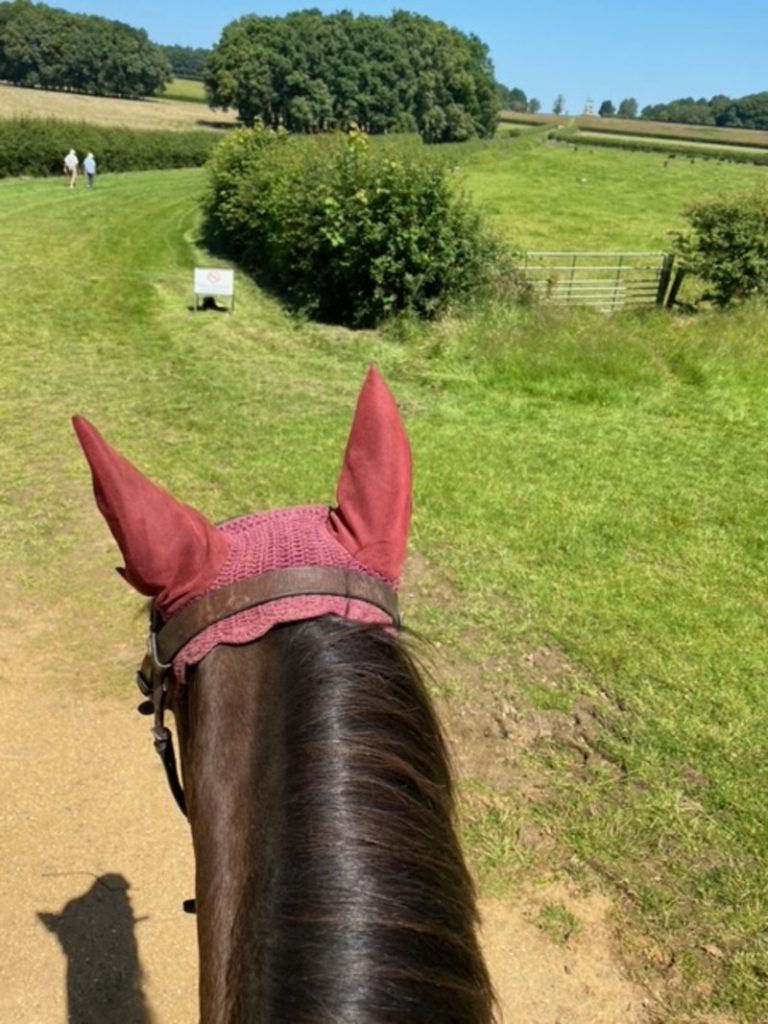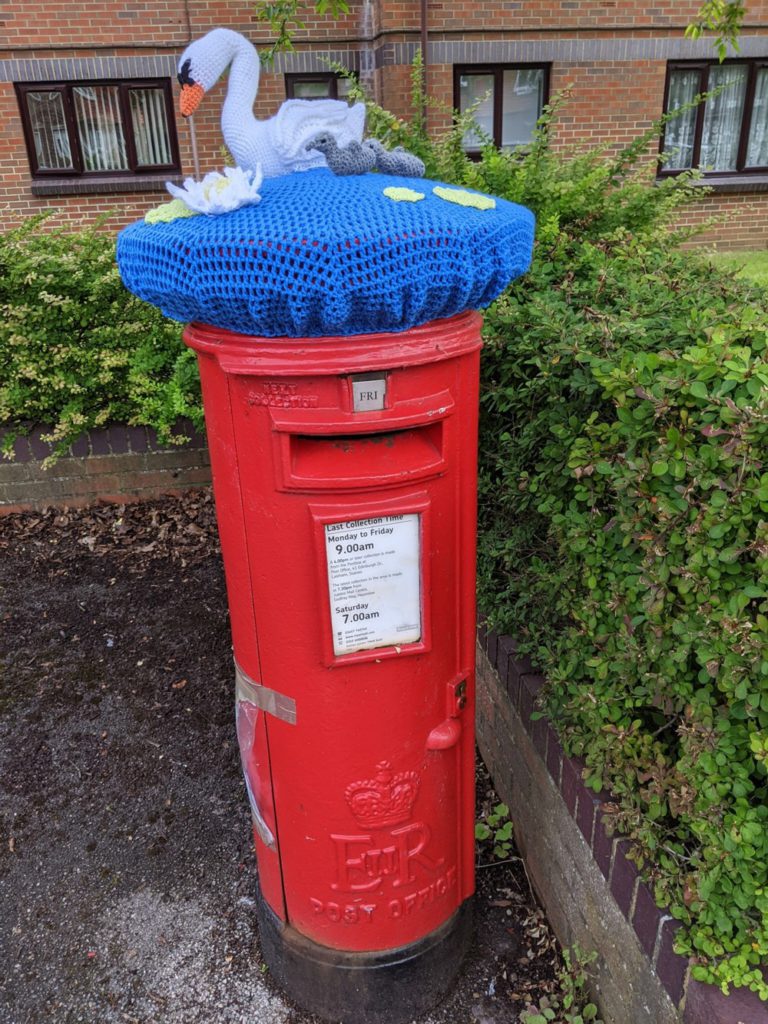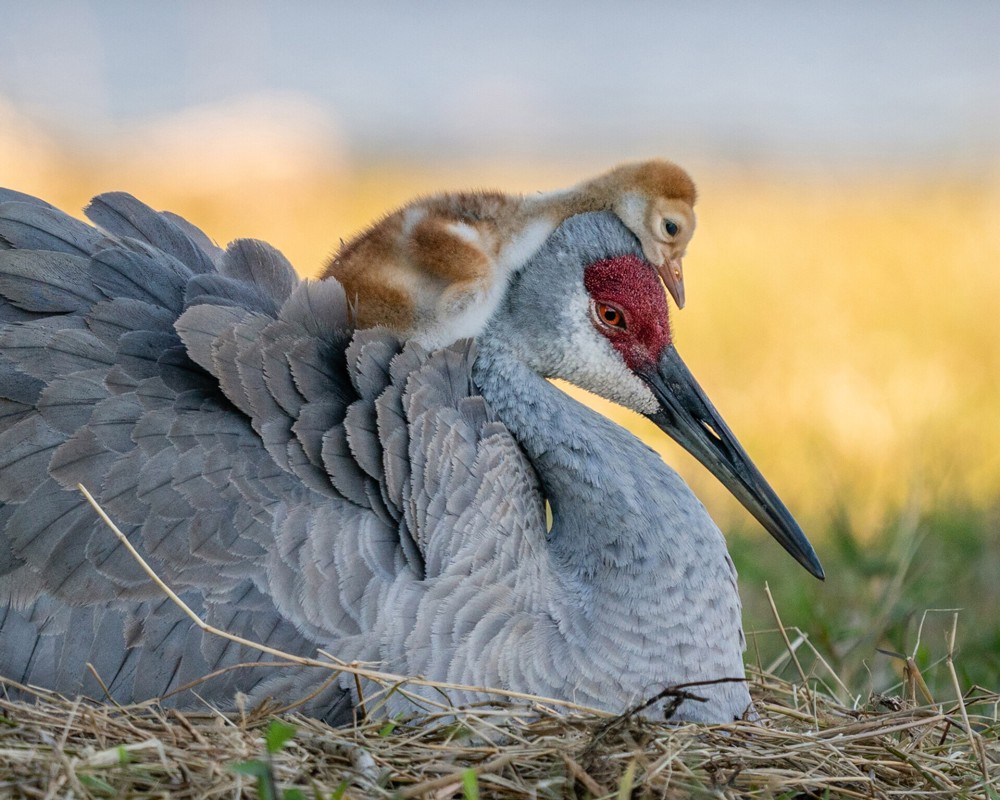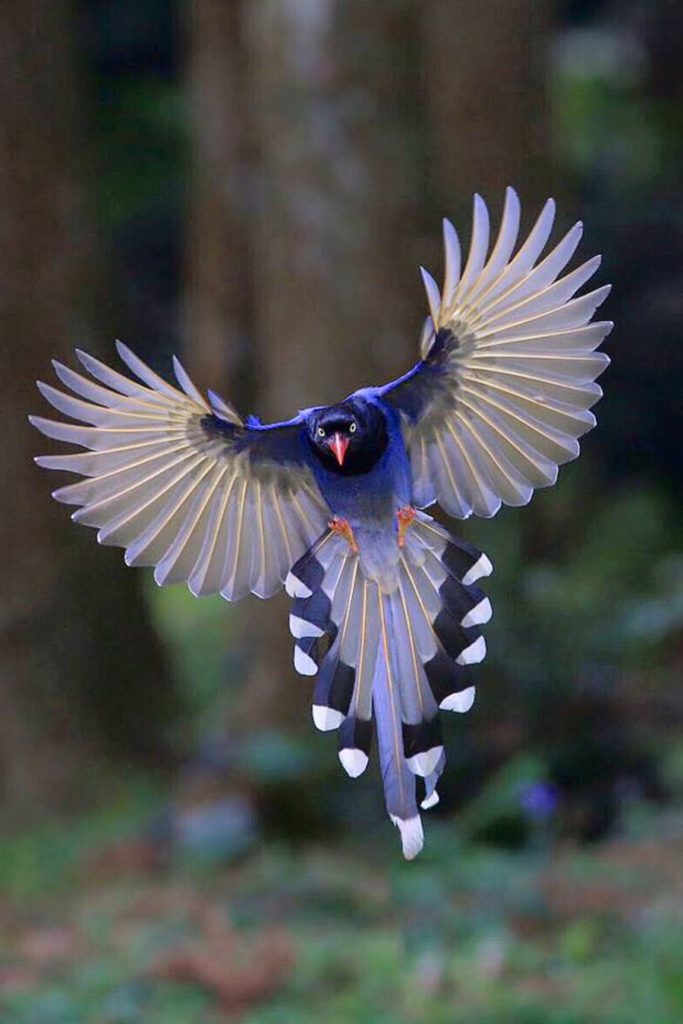Category: Other creatures
Californian kingsnake!
I know, it sounds like a phrase you’d encounter in a political rant about California, dream to nightmare, blah blah.
Actually, it’s an actual type of snake.
Rider’s view of a horse with a red hat
Post box cosy with swan and cygnets
Posted by a friend on Facebook today:
Swans being so very elegant, I am only one of many who likes to photo them, and there’s nothing special about my swan photos, unless the swans are the wrong colour, that being a posting here that keeps on being visited from time to time. But these knitted swans are definitely swans with a difference.
The BBC has more.
“The overall impression is that of a giant, frowning woodpecker.”
Here. In America “top secret” only seems to mean that the details of exactly what it consists of are kept out of sight. If this airplane really was top secret, we’d not even have been told of its existence.
Another metallic/feathered posting. This time the former sort of bird is being likened to the latter sort.
A feathered crane and a small feathered crane
I love cranes. By which I mean tall metal things for lifting stuff. Not so much cranes like this:
It’s not that I object to feathered cranes, more that such birds already have numerous human champions, while many humans still turn their noses up at the metallic sort of crane. Some regard metal cranes as, at best, a necessary evil. And if you hate the whole idea of any new buildings ever getting built, then you won’t even regard metal cranes as necessary. Just evil. And I dissent vehemently from all that sort of talk.
Given the double meaning of the word, both sorts of craniac, metallic and feathered, find their internet searches for news of their preferred cranes heavily diluted.
However, although being only a metallic craniac, I do like the above feathered crane and small feathered crane photo. It’s one of these photos, which I first encountered here.
Sheep herding in Israel
Videoed from above by Lior Patel. Watch the sheep here. Or, watch them where I first did, at Mick Hartley’s blog.
Very social animals. Which is how one man and a dog are able to control vast numbers of them.
Sheep come in flocks, not herds. Yet, the verb is herd. We don’t flock them. Odd.
Do you love robots now that they can dance?
I watched this video, and resolved to repost it here, only then to realise that I had encountered it because my favourite Twitterer, Steve Stewart-Williams was the reason I was seeing it in the first place:
Amazing how fast Boston Dynamics' robots have gone from first faltering steps to this. Amazing and a little scary… 🤖https://t.co/TQxAbTFVdU pic.twitter.com/irI6otg9AT
— Steve Stewart-Williams (@SteveStuWill) July 1, 2021
Remarkable. And, I agree with SS-W, a bit scary too.
Taiwan Blue Magpie
The plan is to spend my blogging day writing a piece for Samizdata about why there has been, as yet, no Paper Money Collapse. So, here, today, I will fob you off with a photo of a Taiwan Blue Magpie:
Impressive, I hope you agree.
Colourful photoing like this is creating a very colourful virtual world. Then the kids go outdoors and see Monochrome Modernism, and they say: Brighten It Up! I’m not saying I’ll necessarily like all of what then happens, but I am saying it’ll happen. We are now seeing only little glimpses of this, but any decade now the floodgates of architectural colour will open.
Expect big paintings of, e.g., Taiwan Blue Magpies, on the sides of Modernist boringnesses.
National Geographic on the evidence for evolution
Following my recent medical disappointments, I have been pondering, as you do in such circumstances, the big questions. Like: What Do I Really Believe? And it turns out that one of the biggest things I believe in is evolution, as the best explanation for why we humans are the sort of creatures we are, altruistic and selfish, affectionate and murderously aggressive, doomed to die, and so on. I was raised by Church of England atheists, and that is what I still am. The older I get the more this is so.
But what is the evidence for the truth of evolution, as opposed to the rival god-did-it explanations which evolution is slowly but surely replacing?
Was Darwin Wrong? asks a recent National Geographic cover. Inside, in very big capitals, the answer: NO. (Thank you Steve Stewart-Williams.) I opened up the article, to learn what I hoped would be more about all this evidence.
No one observation of the natural world would be enough to convert a convinced god-ist, because after all, god can do anything he pleases. Atheism is hard to prove with one knock-out punch. But evolution wins, for me, overwhelmingly, on points. Point after point after point, each point being made perfect sense of by the idea of natural selection of chance variations, and each point meaning that any god is going to have to have been the kind of god who, for no very obvious reason, wanted all creatures without exception to look exactly as if they had all evolved. Simply, evolution makes sense to me, while god, especially the idea of God that Christians and Muslims proclaim, makes, to me, no sense at all. It’s the range and volume of evidence that is so convincing.
Two of the many points made in the National Geographic article made particular sense to me. It’s not that I’d never thought before about such things, just that this time around, they both hit home with particular force.
Point one:
All vertebrate animals have backbones. Among vertebrates, birds have feathers, whereas reptiles have scales. Mammals have fur and mammary glands, not feathers or scales. Among mammals, some have pouches in which they nurse their tiny young. Among these species, the marsupials, some have huge rear legs and strong tails by which they go hopping across miles of arid outback; we call them kangaroos. Bring in modern microscopic and molecular evidence, and you can trace the similarities still further back. All plants and fungi, as well as animals, have nuclei within their cells. All living organisms contain DNA and RNA (except some viruses with RNA only), two related forms of information-coding molecules.
Such a pattern of tiered resemblances — groups of similar species nested within broader groupings, and all descending from a single source — isn’t naturally present among other collections of items. You won’t find anything equivalent if you try to categorize rocks, or musical instruments, or jewelry. Why not? Because rock types and styles of jewelry don’t reflect unbroken descent from common ancestors. Biological diversity does. …
Point two:
Vestigial characteristics are still another form of morphological evidence, illuminating to contemplate because they show that the living world is full of small, tolerable imperfections. Why do male mammals (including human males) have nipples? Why do some snakes (notably boa constrictors) carry the rudiments of a pelvis and tiny legs buried inside their sleek profiles? Why do certain species of flightless beetle have wings, sealed beneath wing covers that never open? Darwin raised all these questions, and answered them, in The Origin of Species. Vestigial structures stand as remnants of the evolutionary history of a lineage.
As I tried to explain in this conversation with Patrick Crozier, evolution performs, for me, many of the functions of a religion, in that it gives the best answers we humans have to the “big questions”, like: Where did we come from? And: Why does life feel the way it does for us? It even makes sense of things which we personally reproach ourselves for feeling, like an extreme and “irrational” fear of irrationally hostile strangers.
What I do not feel, now or ever, is any need to believe anything to be true that I do not in fact believe to be true. In that sense, evolution is not my “faith”, if that’s what faith is. Doubting Thomas, in the Bible (here comes my Church of England upbringing), says to Jesus: “Lord I believe. Help thou mine unbelief.” I simply believe what I believe, and doubt whatever I doubt. I believe in evolution, not just as true but as very helpfully and very illuminatingly true, and I do not doubt it.
When checking the links in the above, I discovered that National Geographic doesn’t want me to read that article again. It seems I have gone beyond my limit. I hope that if you want to read it, you’ll be luckier.




